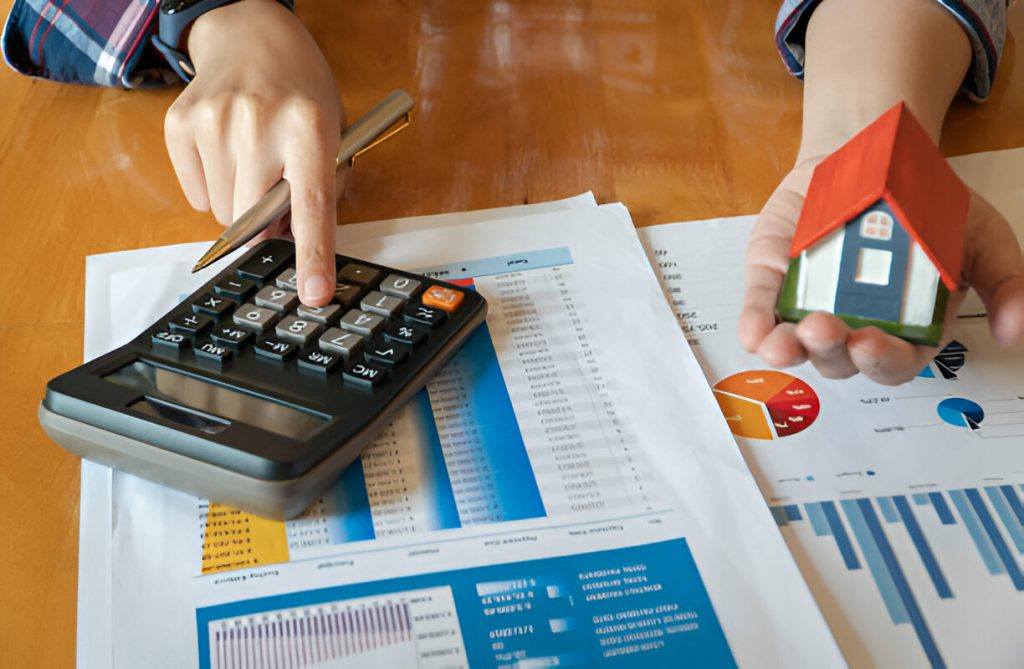
Calculate ROI on Spanish rental property and you’ll find it’s a vital step for any investor eyeing the vibrant real estate market in Spain. Whether you’re looking at beachside villas or city apartments, understanding your return on investment (ROI) is key to making informed decisions. Let’s dive into the details of calculating ROI and how to use tools like a rent ROI calculator to streamline your process.
Why Calculate ROI on Spanish Rental Property?
When diving into the world of Spanish rental property, calculating the Return on Investment (ROI) is like having a financial map to guide you through potential profits and pitfalls. Let’s break down why this calculation is crucial for anyone considering investing in property in Spain.
Know What You’re Getting Into
Investing in property can feel like setting out on a journey without a map. ROI acts as your guide, showing you how well your investment will perform. By calculating ROI, you can get a clearer picture of whether a property will bring you the returns you expect. It’s not just about buying a property; it’s about ensuring it’s a smart financial move.
Make Informed Decisions
Imagine you’re choosing between two rental properties in Spain. Without ROI, you’re guessing how each will perform. By calculating ROI, you compare their potential profitability and make a choice based on hard numbers rather than gut feelings. It’s like comparing two vacation spots based on their activities and costs—except here, you’re comparing investment returns.
Spot Hidden Costs
ROI doesn’t just account for the rental income you’ll earn; it also helps you spot hidden costs. This could include property management fees, maintenance, taxes, and any unexpected expenses. By factoring these into your ROI calculation, you can avoid nasty surprises and ensure your investment truly pays off.
Assess Long-Term Viability
A property might seem like a great deal now, but what about in five or ten years? ROI helps you look beyond immediate gains to assess long-term viability. It gives you a way to estimate future returns and decide if the property will remain a profitable venture as market conditions change.
Set Realistic Expectations
Having a clear ROI calculation sets realistic expectations for your investment. It’s like having a well-planned budget for a project; you know what to expect and can plan accordingly. With a solid ROI figure, you can gauge whether the property will meet your financial goals and adjust your strategy if needed.
Enhance Your Investment Strategy
Finally, calculating ROI isn’t just a one-time exercise. It helps you refine your investment strategy over time. If you find that certain types of properties or locations yield better returns, you can focus on those areas. It’s a bit like tweaking a recipe based on taste tests—adjusting your approach for better results.
By calculating ROI on Spanish rental property, you ensure that your investment journey is well-planned and financially sound. It’s about turning a property into a profitable venture with clear insights and smart decision-making.
How Can You Use a Rent ROI Calculator?
If you’re diving into the world of property investment, using a Rent ROI Calculator is like having a powerful tool in your investment toolkit. It helps you figure out how much return you can expect from renting out a property. Let’s walk through how you can use this calculator effectively.

Input Property Details
To start, you’ll need to feed some basic information into the calculator. This usually includes the purchase price of the property, your expected rental income, and any additional costs. Think of this step as setting up the ingredients before you start cooking—without the right inputs, you can’t get the right results.
Enter Costs and Expenses
Next, input all the costs associated with owning and managing the property. This might include property taxes, insurance, maintenance, property management fees, and any other expenses. These costs are like the hidden ingredients in a recipe—crucial to the final outcome but often overlooked.
Review Your ROI Calculation
Once you’ve entered all the details, the calculator will crunch the numbers and give you your ROI percentage. This figure shows how much profit you’re making relative to your investment. It’s similar to checking the results of a financial test—if the ROI is high, your investment is likely a good one.
Compare Different Scenarios
A great feature of many Rent ROI Calculators is the ability to compare different scenarios. You can tweak variables like purchase price, rental income, or expenses to see how changes affect your ROI. This is like experimenting with different recipes to find the best one. It helps you understand how different factors impact your returns.
Make Informed Decisions
With the ROI results in hand, you can make more informed decisions about your investment. If the ROI is lower than expected, you might reconsider the property or adjust your strategy. It’s like evaluating whether a dish needs more seasoning—sometimes, you need to tweak things to get the best outcome.
Track Performance Over Time
Using a Rent ROI Calculator isn’t just a one-time exercise. You can use it periodically to track how your property’s performance changes over time. This ongoing monitoring helps you stay on top of your investment and make adjustments as needed. It’s like regularly checking your progress in a workout plan to ensure you’re on track.
By effectively using a Rent ROI Calculator, you gain valuable insights into how well your property investment is performing. It helps you understand your returns, make informed decisions, and fine-tune your strategy to ensure long-term success.
How Do You Calculate Rental Property ROI Manually?
Calculating the Return on Investment (ROI) for rental property manually might seem like a bit of a challenge, but it’s a straightforward process once you break it down. Here’s a step-by-step guide to help you get a clear picture of how well your rental property is performing.

Gather Your Financial Data
Start by collecting all the financial information related to your rental property. You’ll need:
- Purchase Price: The amount you paid for the property.
- Rental Income: The monthly or annual income you receive from renting out the property.
- Operating Expenses: This includes property management fees, maintenance costs, insurance, property taxes, and any other expenses related to managing the property.
- Financing Costs: If you have a mortgage, include interest payments and any other loan-related costs.
Calculate Annual Rental Income
To get the annual rental income, simply multiply your monthly rental income by 12. For example, if you charge $1,200 per month in rent, your annual rental income would be:
Annual Rental Income=$1,200×12=$14,400\text{Annual Rental Income} = \$1,200 \times 12 = \$14,400Annual Rental Income=$1,200×12=$14,400
Determine Total Annual Expenses
Add up all your annual expenses. This includes:
- Property Taxes
- Insurance
- Maintenance Costs
- Management Fees
Suppose your total annual expenses amount to $3,000. This will be subtracted from your rental income to determine your net operating income.
Calculate Net Operating Income (NOI)
Subtract your total annual expenses from your annual rental income to get the Net Operating Income (NOI). Using the previous example:
NOI=Annual Rental Income−Total Annual Expenses\text{NOI} = \text{Annual Rental Income} – \text{Total Annual Expenses}NOI=Annual Rental Income−Total Annual Expenses NOI=$14,400−$3,000=$11,400\text{NOI} = \$14,400 – \$3,000 = \$11,400NOI=$14,400−$3,000=$11,400
Determine Your Investment Cost
The investment cost is typically the purchase price of the property plus any additional costs related to acquiring it, such as closing costs. If your purchase price was $150,000 and closing costs were $5,000, your total investment cost is:
Investment Cost=$150,000+$5,000=$155,000\text{Investment Cost} = \$150,000 + \$5,000 = \$155,000Investment Cost=$150,000+$5,000=$155,000
Calculate ROI
Finally, calculate your ROI by dividing the Net Operating Income by the total investment cost and then multiplying by 100 to get a percentage. Here’s how it looks:
ROI=(NOIInvestment Cost)×100\text{ROI} = \left( \frac{\text{NOI}}{\text{Investment Cost}} \right) \times 100ROI=(Investment CostNOI)×100 ROI=($11,400$155,000)×100≈7.35%\text{ROI} = \left( \frac{\$11,400}{\$155,000} \right) \times 100 \approx 7.35\%ROI=($155,000$11,400)×100≈7.35%
This percentage tells you how much return you’re getting on your investment.
Consider Other Factors
While the basic ROI calculation gives you a good idea of your property’s profitability, it’s also helpful to consider other factors like property appreciation, tax benefits, and financing costs. These elements can significantly impact your overall return but aren’t always reflected in the simple ROI calculation.
By following these steps, you’ll be able to manually calculate the ROI for your rental property, giving you a clearer understanding of how well your investment is performing.
What Are the Best Tools for Calculating Investment Property ROI?
When diving into property investment, having the right tools can make all the difference. Calculating the Return on Investment (ROI) accurately helps you make informed decisions and maximize your returns. Here’s a look at some of the best tools to help you calculate ROI for investment properties effectively.
Online ROI Calculators
Online ROI calculators are handy tools that simplify the process of calculating your investment returns. You input your property details, such as purchase price, rental income, and expenses, and the calculator does the rest. These tools can save you time and ensure accuracy. Websites like BiggerPockets and Realtor.com offer user-friendly ROI calculators that can quickly provide you with valuable insights.
Real Estate Investment Software
For those managing multiple properties or looking for more detailed analysis, real estate investment software is a great option. Tools like Stessa and Property Metrics allow you to track income, expenses, and performance across various properties. They often come with features like cash flow analysis, financial reporting, and performance tracking, giving you a comprehensive view of your investments.
Spreadsheet Templates
Spreadsheets offer flexibility and customization for calculating ROI. You can use tools like Microsoft Excel or Google Sheets to create your own ROI models or use pre-designed templates. Many real estate investors create detailed spreadsheets to track rental income, expenses, and ROI calculations. Templates are available online and can be tailored to your specific needs.
Financial Calculators
Financial calculators, available online or as mobile apps, provide a range of investment analysis tools. Apps like Investopedia’s Financial Calculator or Calcapp can help you determine ROI along with other financial metrics like Net Present Value (NPV) and Internal Rate of Return (IRR). These calculators are particularly useful for more complex investment scenarios.
Real Estate Analysis Platforms
Platforms like Roofstock and PropStream offer comprehensive real estate analysis tools that include ROI calculators. These platforms often provide market data, property analysis, and investment insights, helping you evaluate potential investments more thoroughly. They can be particularly useful for investors looking to analyze properties in different locations or markets.
Mobile Apps
For on-the-go calculations, mobile apps can be incredibly convenient. Apps such as ReaLTOR® or Rental Property Calculator allow you to input property details and instantly get ROI calculations on your smartphone or tablet. These apps are great for quick assessments and making decisions while you’re out and about.
Professional Financial Advisors
Sometimes, the best tool is a professional advisor who specializes in real estate investments. Financial advisors can provide personalized insights and help you with more complex calculations, including tax implications and financing options. They can offer advice tailored to your financial situation and investment goals.
By using these tools, you can make the process of calculating ROI for your investment properties much easier and more accurate. Whether you prefer online calculators, software, spreadsheets, or professional advice, having the right resources at your disposal ensures that you make well-informed investment decisions.
What Factors Influence ROI on Spanish Rental Property?
When investing in rental property in Spain, several factors can impact your Return on Investment (ROI). Understanding these factors can help you make smarter investment decisions and maximize your returns. Here’s a breakdown of the key elements to consider.

Purchase Price and Financing
The purchase price of your property is one of the most significant factors affecting ROI. A lower purchase price generally means a higher potential ROI, provided the rental income remains consistent. Additionally, how you finance the property plays a crucial role. If you use a mortgage, the interest rate and loan terms will impact your monthly payments and overall ROI. Lower interest rates and favorable financing terms can boost your ROI.
Rental Income
Your rental income is directly tied to your ROI. Higher rental income increases your returns, while lower rents can reduce profitability. The rental market in your specific area of Spain will determine how much you can charge. Factors such as location, property size, and amenities influence rental rates. It’s essential to research the local market to set competitive rents and maximize income.
Operating Expenses
Operating expenses, including property management fees, maintenance costs, property taxes, and insurance, can significantly impact your ROI. Keeping these expenses in check is crucial for maintaining a healthy return. Regular maintenance and efficient property management can help reduce costs and improve your ROI. Make sure to account for all potential expenses when calculating your ROI to avoid surprises.
Property Location
The location of your property in Spain affects both rental income and expenses. Properties in high-demand areas, such as major cities or popular tourist destinations, often command higher rents and experience lower vacancy rates. On the other hand, properties in less desirable locations may have lower rental income but could still offer good returns if purchased at a lower price.
Property Appreciation
While ROI primarily focuses on rental income, property appreciation also plays a role. If your property increases in value over time, you can benefit from capital gains when you sell. This potential for appreciation can enhance your overall return on investment. Keep an eye on market trends and property values in your area to gauge potential appreciation.
Tax Implications
Taxes can have a significant impact on your ROI. In Spain, property owners must pay various taxes, including income tax on rental income and property tax. Understanding these tax obligations and taking advantage of any available deductions or tax benefits can help improve your ROI. Consulting with a tax professional familiar with Spanish real estate can provide valuable insights.
Market Conditions
The broader real estate market conditions in Spain can influence your ROI. Economic factors, interest rates, and market trends affect rental demand and property values. Staying informed about market conditions and adjusting your investment strategy accordingly can help you navigate fluctuations and maintain a strong ROI.
Vacancy Rates
Vacancy rates impact your rental income and, consequently, your ROI. Properties with high vacancy rates can lead to periods without rental income, affecting your returns. To minimize vacancies, choose properties in desirable locations, maintain a good rental history, and ensure competitive rental pricing.
By considering these factors, you can better understand how each element influences your ROI on Spanish rental property. Evaluating these aspects thoroughly will help you make informed decisions and enhance your investment returns.
FAQs
What is the average ROI for rental properties in Spain?
ROI can vary widely depending on the location and type of property. Generally, you can expect ROI between 4% and 8% for rental properties in popular Spanish cities.
How often should I recalculate my property’s ROI?
It’s a good idea to recalculate your ROI annually to account for changes in rental income, property value, and expenses.
Can a high ROI guarantee a successful investment?
While a high ROI indicates profitability, it’s essential to consider other factors like property appreciation, market stability, and long-term investment goals.
Conclusion
Calculating ROI on Spanish rental property involves assessing your investment’s costs, rental income, and ongoing expenses. Whether you use a rent ROI calculator or calculate manually, understanding your ROI helps you make better investment decisions. Keep an eye on market trends and property management costs to optimize your returns and ensure your Spanish rental property investment is a sound financial move.



